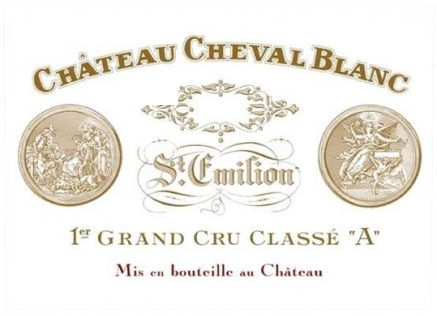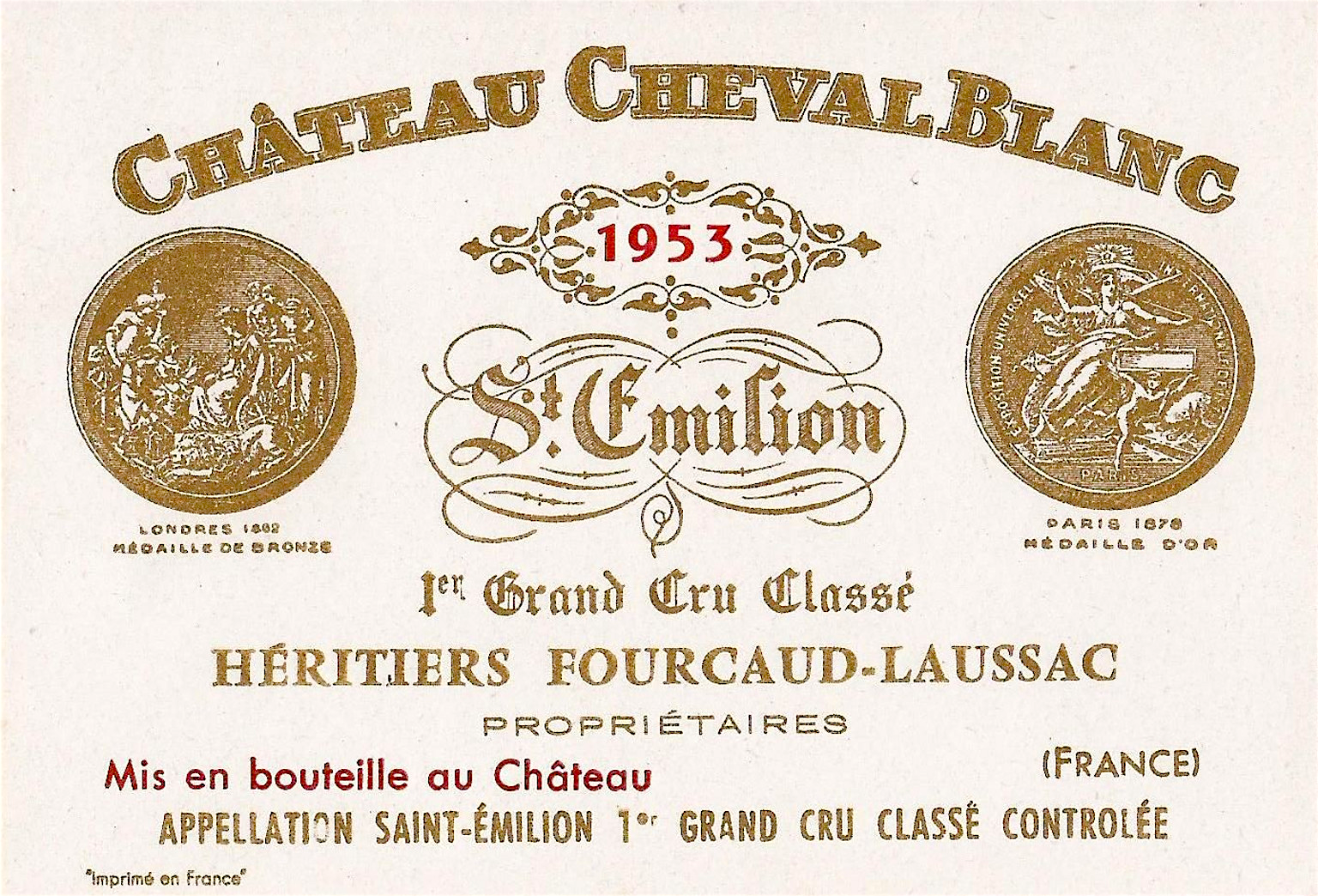
Château Cheval Blanc
1, Cheval Blanc
33330 SAINT-EMILION
Tél. : +33 (0)5 57 55 55 55
contact@chateau-chevalblanc.com
www.chateau-chevalblanc.com
Located in the prestigious Saint-Émilion vineyards, on the outskirts of the appellation, just across the border from the Pomerol appellation, Château Cheval Blanc is an iconic Bordeaux estate and a world-renowned growth. Famous for its exceptional wines, this chateau is the epitome of elegance, refinement and excellence in Bordeaux wine on the Right Bank.
For six centuries, winegrowers and investors have worked tirelessly to make Cheval Blanc great, with an infinite passion for its exceptional terroir, where remarkable wines are born. Wines that can confidently be described as equal to the Médoc's 1855 Premiers Crus Classés, such as Haut-Brion, Lafite-Rothschild, Mouton-Rothschild, Latour and Margaux.
Although its history goes back several centuries, it was in the 19th century, as early as 1832 with Jean-Jacques Ducasse from Bordeaux, that the estate began to earn its letters of nobility with a reputation acquired over the course of the families at the head of the cru. However, the château (the building) was founded by the Laussac-Fourcaud family in the early 19th century. The next generation, who took advantage of the opportunity to change their surname to Fourcaud-Laussac, gave the estate a new lease of life, earning it an international reputation thanks in particular to the commitment and vision of the owner at the time, and establishing the estate as one of the most prestigious in Bordeaux. Today, the château is owned by the LVMH group (Moët Hennessy Louis Vuitton) through the family of Bernard Arnault, who acquired it with Baron Albert Frère in 1998. Long-time friends Albert Frère and Bernard Arnault have always shared a common passion: wine. This investment undoubtedly marked the beginning of a new era for Cheval Blanc, establishing the wines in a tradition of excellence.
In 2009, Bernard Arnault became the sole owner of the château, further symbolizing the commitment of one of the great luxury names to the world of wine.
The brilliant and talented Pierre Lurton has been at the helm of operations and team management since 1990. At that time, Pierre Lurton was the General Manager (just as he is at the famous Château d'Yquem in Sauternes, Bernard Arnault's other property), but in July 2023 he will hand over to the promising Pierre-Olivier Clouet (ex-technical director since 2008), who will become Cheval Blanc's new General Manager. Pierre Lurton is now Chairman of the Board.
The new General Manager, Pierre-Olivier Clouet, who joined Cheval Blanc as an intern in 2004, has risen brilliantly through the ranks, while also getting involved in key projects such as the construction of the winery by Christian de Portzamparc, the transition of the vineyard to agroecology, including agroforestry (to which Cheval Blanc is committed for the future), and the creation of another wine: Petit Cheval Blanc.
The Château Cheval Blanc vineyard extends over 39 hectares in a single block. Indeed, Cheval Blanc is one of the few single-holding estates where the plot has been almost identical for almost a century and a half, since the plot has had the same configuration since 1871, and the current vineyard is over 90% identical to the 1911 area. The vineyard benefits from an exceptional terroir composed mainly of fine-textured clays, with finer sandy or coarse gravelly textures. This combination of soils and subsoils, in roughly equal proportions (which is rare on a single property), gives the grapes a distinct complexity and aromatic richness that is very characteristic of Cheval Blanc wines, and therefore recognizable to those who are used to drinking them.
Forty-five parcels make up the estate's vineyard. It's as if Cheval Blanc had 45 small vineyards, each with its own unique identityHere, each soil (of which there are three main types) has its own perfectly adapted grape variety, with different ages (planting dates) indicated at the end of the rows by small signs. Each parcel is identified by its age, surface area, soil type, rootstock and grape variety, enabling us to obtain batches, before blending, each with its own personality to produce wines of rare complexity.
The grape varieties are therefore original, with 52% Cabernet Franc, 43% Merlot and 5% Cabernet Sauvignon. Cheval Blanc can therefore count on the particularities of the 237,288 vines rooted in the Cheval Blanc soil. Each plot is identified by its row number and its place in the row. This means that each vine has its own identity within the vineyard. This is what guarantees the strong identity of Château Cheval Blanc.

Although the most important thing is to harvest healthy, ripe grapes, we mustn't forget the technological phase to sublimate this hand-harvested raw material. In the vat room, every effort is made to extract every possible combination of the estate's different soils and the three grape varieties grown there. That's why the estate has been running a research program for many years, measuring soil temperature, water supply and mineral nutrition throughout the year, combined with phenological data to control grape ripening. The result of this research is a new, state-of-the-art work tool. Here, means and ambition are not skimped on.
Cheval Blanc has therefore built a brand new vat room and cellar with a singular aesthetic and great functionalityInaugurated in June 2011, the vat room and cellars were designed by the great French architect Christian de Portzamparc. Like a double wave, or a swell in an ocean of vines, the 6,000 m2 buildings are at the service of man's know-how. It's clear that the gesture takes precedence over the tool, and not the other way around. The light-filled vat room, in the shape of an artificial hill, is topped on its roof terrace with herbs and vegetation of all kinds. The whole is in perfect harmony with the château and blends in perfectly with its surroundings, without offending neighboring properties or anything else.
In this vat room, where there's no overkill or frills, everything is at the service of human gesture and expertise. Equipped with fifty-two concrete vats perfectly aligned in six rows, the vat room allows micro-vinifications to make the most of the vineyard's complex and rich plot structure. These concrete tanks, built in Italy from a single piece, come in a variety of shapes and capacities, from 20 to 110 hectolitres. The aim here is to produce a “made-to-measure” vinification every year, reproducing the exact parcel management of the château.
As for the semi-circular cellar, also unostentatious - with barrels perfectly aligned in a curve - it is in line with the policy of precision that the Château guarantees throughout the wine-making process. On November 20, 2013, Cheval Blanc became the first winery in the world to receive an award for its design: the renowned International Prize for Architecture, awarded by the Chicago Athenaeum, a museum of architecture and design, and the European Center for Architectural Art Design and Urban Studies.

It's no secret that Cheval Blanc produces some of the most sought-after wines in the world. Bottles praised for their elegance, finesse and exceptional ageing potential - the hallmarks of the world's great wines. So it's not hard to see how its wines can match the quality and international renown of Haut-Brion, Lafite-Rothschild, Margaux, Latour and Mouton-Rothschild, the Médoc's 5 Premiers Crus Classés en 1855. Proof of this can be seen in the prices fetched by Cheval Blanc wines at London and Paris auctions. And just like these Cinq Premiers Crus Classés, Cheval Blanc has long been one of the wines served at the most prestigious international and presidential dinners.
Renowned for their delicacy and power (which are not mutually exclusive), the wines of Cheval Blanc, mainly blended from Cabernet Franc and Merlot, are of exemplary typicity, offering an incomparable sensory and taste experience. The Grand Vin or first label (in the Bordeaux tradition) presents deep, subtle aromas of floral notes, red and black fruits and spices. Everything is nuanced, without expression or gratuitous exuberance. Elegant on the palate with its infinitely caressing tannins, dense but never coarse depending on the vintage, the wine reveals all its sublime complexity over the decades, provided you're willing to wait: principle of great wines in exceptional vintages. Cheval Blanc is, by definition, a wine for ageing.
In addition to its Grand Vin, Château Cheval Blanc also produces a second red wine, Le Petit Cheval. This one - whose blend is somewhat different from the grand vin - embodies the excellence and quality so characteristic of Cheval Blanc, just as its big brother has since its launch in 1988. However, its style is much more accessible in its first years of bottling, and can therefore be enjoyed younger without feeling like infanticide. That's the beauty of second wines from estates, even if Le Petit Cheval is also a wine in its own right, and opening it generates great pride and a certain privilege, while thinking about what might be the unique, privileged experience of opening the great wine for other occasions.
Finally, since 2014, Cheval Blanc has also been making another second wine, a variation on the Petit Cheval rouge, but this time as a dry white in the Bordeaux Blancs secs appellation: Le Petit Cheval Blanc. This wine - whose blend is predominantly based on Sauvignon, enhanced by Sémillon - comes from 13 different parcels of sand and clay spread over 6.6 hectares (in fact former parcels of Château La Tour du Pin). A dry white wine produced in Saint-Emilion, a land of red wines par excellence, is not a curiosity if we are to believe the increasing number of Right Bank estates that have been producing dry whites for almost two decades now.
1945,1947, 1953, 1961,1964, 1982, 1990, 1995, 1998, 2000, 2005, 2009, 2010, 2015, 2016, 2018, 2019, 2020, 2022

Website under construction
Available Soon